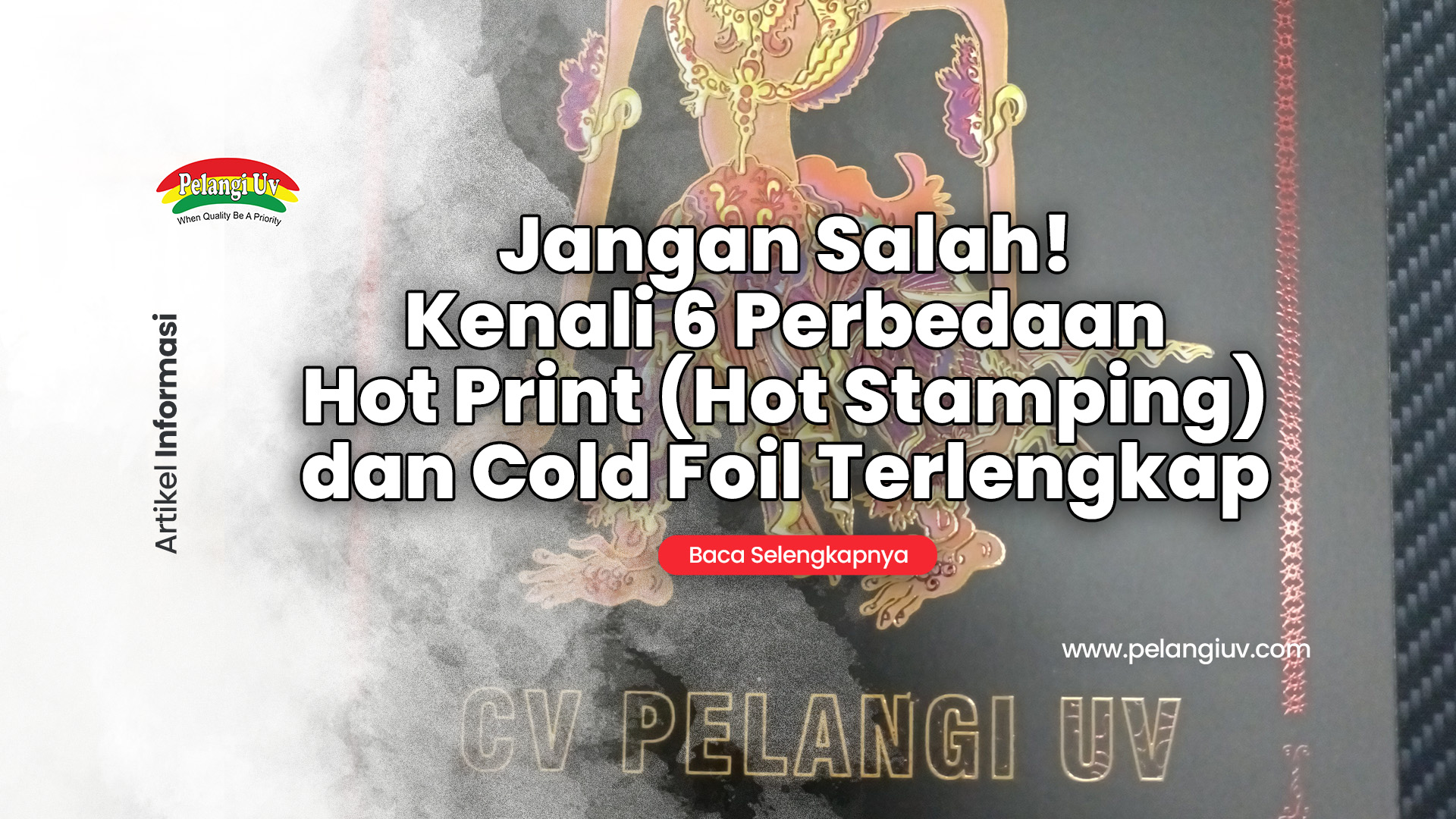Don't Be Mistake! 6 Difference Hot Print (Hot Stamping) and Cold Foil Completely
You need to know the difference between Hot print (Hot Stamping) and Cold foil, you know. These two types of finishing are often misunderstood because the results are almost similar. However, it turns out that these two types of finishing are very different starting from the process, price, to finished results.
The reason is, these two types of finishing are often used in book covers or skincare packaging. Not without reason, Cold Foil and Hot Print services provide a more exclusive effect so that the product value can increase.
So, what is the difference between Hot Print and Cold Foil? Scroll down to find out the complete explanation!!
Difference between Hot Print (Hot Stamping) and Cold Foil
The reason is, you need to know the differences between these two types of finishing to support your decision in choosing the best print finishing. The following are some of the differences between Hot Print and Cold Foil from various points of view:
Understanding Hot Print and Cold Foil
Hot Print, or commonly referred to as Hot Stamping, is a finishing technique in which metallic foil is transferred to the surface of paper or other materials using heated cliche and high pressure. This technique is often used to give a sparkling effect (according to the color of the foil used) on products such as invitation cards, packaging and books.
Meanwhile, Cold Foil is a technique where metallic foil is applied to the surface of paper or other materials using polyfilm which uses Offset Printing and Flexographic techniques. This process utilizes UV adhesive which is applied to the desired print area, then the foil is attached using a roll machine using the Flexographic technique. Then, the results will be visible.
Hot Print and Cold Manufacturing Process
HotPrint
- Prepare the Cliche (Die) according to the desired design.
- The cliche is put into the machine and heated until it reaches a certain temperature.
- The machine will press the foil between the paper and the cliche at a certain pressure.
- With pressure, the cliche presses the foil onto the paper, transferring the desired design.
Cold Foil
- Make a Screen Printing Screen according to the specified design.
- Place the Screen Printing Screen on the Screen Printing machine.
- The printing technique uses the Ultra Vernish technique.
- Then, using a Roller Coating System which is Solvent Based, then cured with radiation. So, the foil will stick firmly.
- Aspects of Paper Grammage.
Gramatur Paper
HotPrint
Hot printing is suitable for various types of paper grammages, but is generally more effective on paper with high grammages (250 gsm and above) because it is able to withstand heat and pressure during the process.
Cold Foil
Cold foil can be used on paper with a lower grammage (starting from 100 gsm) because the process does not require high heat and pressure, thereby reducing the risk of damage to thin paper.
Materials Used
HotPrint
- Metallic foil (gold, silver, hologram and other colors
- Paper or cardboard with high resistance to heat and pressure
Cold Foil
- Special metallic foil sensitive to UV adhesive
- UV Adhesive
- Paper or material compatible with UV adhesive
- Suitable Mold Types
HotPrint
Hot print is very suitable for products that require a premium and elegant effect, such as:
- Invitation cards.
- Book cover.
- Luxury packaging label.
- Certificate.
- Cold Foil.
Cold foil is suitable for printed products that require fast application and high precision, such as:
- Magazine
- Brochure
- Product labels
- Flexible packaging
Quality of Results
- Hot Print produces a deeper foil effect due to the high pressure.
- Cold foil provides a smooth, even finish, perfect for designs that require precision.
Design Flexibility
- Hot print has limitations on very detailed or complex designs due to cliché requirements.
- Cold foil is more flexible in terms of design because there are no limitations from climatic, allowing the application of foil on very small and delicate areas.
Closing
Those are the 6 differences between Hot Print (Hot Stamping) and Cold Foil. You can choose your printing project according to your needs and aspects that need to be considered such as the quality of the desired results, design details, paper grammar, and other aspects.
For consultations and orders for Hot Print (Hot Stamping) and Cold Foil finishing services, you can via Whatsapp 0822 3101 9363.
For consultations and orders for Hot Print Foil and Cold Foil raw materials, you can via Whatsapp 085174176782.

